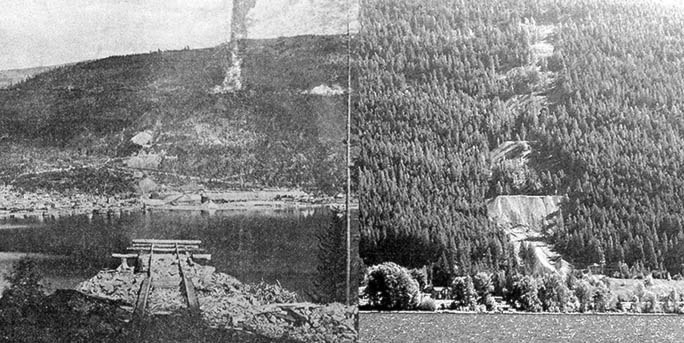Jim Cameron
Note: As of March 10, 2014, there are 2,449 active mineral, placer and coal mining tenures within the Regional District of the East Kootenay.
"It is but fair to hope that this undertaking will prove an exception to the general rule, that a mine is not without honor except its own country, and that local men, having a reliable property that will stand up to the test of any practical examination, will not need to go to strangers for the sinews of war."
Okay, you might want to read through that once more but, if not, it is simply a rather melodramatic plea for money, printed in the Cranbrook Herald newspaper in 1908, and likely written by a publisher who held interests, directly or indirectly, in the affair.
Specifically, it is a plea for funds for the proposed Aurora mining project. Mining projects are always in need of money, the deal being that should the mine pan out the investors will make money in return, which is great when it happens but if not, well, there's always more hills out there. Such is the gamble of mining.
Cranbrook, in many ways, was built on mining, or at least the speculative side of the enterprise. From the Wild Horse to Perry Creek and Palmer Bar, from the Sullivan Mine at Kimberley to the St. Eugene Mine at Moyie, the prospect of wealth was always winking seductively and there were always someone waiting to be seduced.
The Aurora is just one of many claims surrounding Moyie Lake. From the time that local native Pierre showed the goose egg lump of glittering mineral to Father Coccola of the St. Eugene Mission and the Father in turn showed it to mining engineer James Cronin, who in turn showed it to people who invested a great deal of money in the Moyie St. Eugene mine and made a great deal of money in return, Moyie Lake was viewed as a possible goldmine, or perhaps a silver mine, or at least something reasonably zinciferous.
Of the numerous flanking claims — the Horse Shoe, Portland, Etna, Alice and Guindon — the Aurora showed the most promise for the simple reason that the rich St. Eugene vein on the east side of the lake was thought to course under the lake and theoretically come up on the western shore where the Aurora was located. It seemed plausible enough that, in 1907, the Cambrian Mining Co. formed with the sole purpose of excavating their mineral claims on the bottom of the lake. They sank a shaft in the lake about 150 feet from the eastern shore near the township, with the intention of creating a caisson (a watertight retaining structure) in which they might descend to work the bedrock. They went down about 100 feet and hit bottom about the same time as the company. Having incurred expenses in the area of $60,000 (a huge amount at the time) the project was abandoned due to a lack of capital. The company collapsed into obscurity, the structure collapsed into the lake.
Local Cranbrook realtors Beale and Elwell sold shares in the Aurora Mine in March 1909, at a cost of 25 cents each. Investors were hopeful because the more money raised the more digging could be done. The No. 1 tunnel went in a distance of about 180 feet near the summit of the hill. The No. 2 shaft lower down the mountainside eventually reached a distance of 450 feet into the hillside. The No.1, 50 feet above the lake, went in some 370 feet.
Information was received in Sept. that "high grade ore has been struck in the lower tunnel and that the outlook for the mine never looked brighter." The reports appear to have been premature. In December, Beale and Elwell arranged an excursion to the mine via a boat across the lake, allowing prospective investors to view the "now famous" Aurora mine workings. The fame appears to have been premature; the excursion appears to have left some investors cold.
Mining continued throughout the summer of 1910, demonstrating how "cleverly means are adapted to the ends in view at every turn, but this might be expected since a considerable amount of the development has been done by practical miners who, instead of taking cash for their work, were glad to accept stock in the company."
In short, underequipped men earning no money. A final editorial plea in December, 1911, entreated "let those who have fought so long and so successfully on the deep of the great financial waters but stay, loyally, together a little longer and the mounting wave will move them shoreward soon."
It was upon that wave that the Aurora's ship sailed in 1912 (with the exception of the years 1926-27, when it was mined once more with similar results).
The remains of the mining are still plainly visible across the waters from the town of Moyie. The St. Eugene, about 1,000 yards eastward of the Aurora, produced over a million tons of silver/lead ore in a period of some 20 years and made its investors a great deal of money. The Aurora turned out less than 4,000 tons all told. As Jane Austen (though not much of a miner herself) inquired in Pride and Prejudice: "What are men to rocks and mountains?"
With thanks to "Moyie Reflections: Recollections of a Kootenay Mining Town." and Kevin Franck, GIS Analyst, Ministry of Forests, Lands and Natural Resource Operations.
